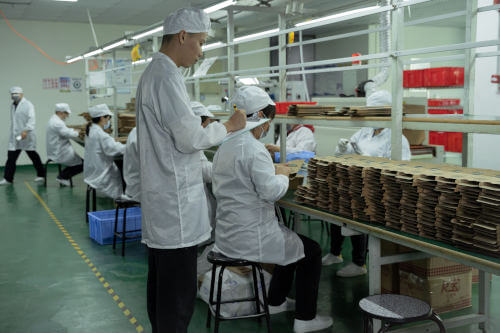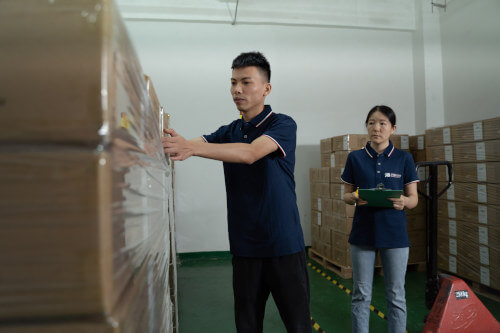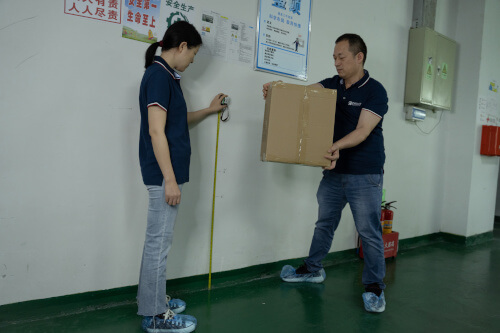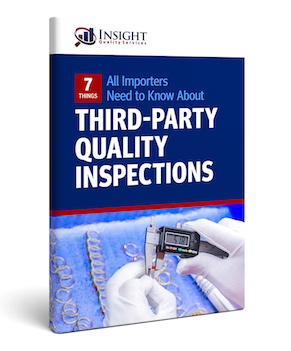When you import from overseas, controlling product quality will be one of the most crucial keys to your success. You want to ensure that you receive products that meet your requirements and satisfy customer expectations.
Many importers conduct inspections before, during, or after production to help them verify product quality. Some leverage third-party inspection services, like Insight, while others use their in-house team. Regardless, there are costs associated with these inspections, and it is natural to consider the impact of inspection frequency on your budget.
Increasing inspection frequency might raise your expenses, while decreasing frequency too much might compromise product quality. You can determine inspection frequency based on various factors, some of which we’ve outlined here.
Table of Contents
3 Factors to Consider When Determining Inspection Frequency

Some of the factors that you should consider when thinking about inspection frequency are:
#1 Supplier History
What kind of history do you have with your supplier? Is this a new supplier, or one you have worked with successfully for several years?
If it is a new supplier, you may want to conduct additional inspections before or during production. If it is a regular supplier that you have worked with for a longer time and whose quality you trust, then you may carry out fewer inspections.
Be careful, however, not to eliminate all inspections, even with trusted suppliers. There is a phenomenon in low-cost countries referred to as ‘quality fade.’ Quality fade refers to a slow and gradual decline in product quality that may not be noticeable at first but gets worse over time. It often only becomes apparent once there is a significant product quality issue.
Another factor to consider is your supplier’s quality management system. Many manufacturers work hard to attain relevant international certifications, such as ISO 9001 for quality management. You can consider conducting periodic factory audits to determine how strictly they adhere to these standards and use the findings to determine if less frequent inspections are warranted.
#2 Your Product
If you are importing high-end products for discerning customers, you want to ensure top-notch quality. Conducting inspections throughout production can help you to achieve this.
You will find that you have more to lose by skipping inspections, which could increase the likelihood of shipping substandard products. On the other hand, if you are importing low-value products, you may get away with inspecting less.
Similarly, you may be importing a complex product such as one with many parts or components. In this case, it may be essential to carry out additional inspections, for example, checking raw materials or components to ensure that they match specifications.
#3 Product Use
The final product use will largely determine how much attention you should pay to inspections. A product that carries significant risk, such as a medical device, like a pacemaker or a hearing aid, might require more stringent checks.
The same could be valid for aerospace or automotive parts. And there might be set legal requirements to meet, increasing the need for frequent inspections.
Can You Reduce Inspections Over Time?

As discussed, carrying out product inspections helps ensure that you import quality goods, but they come at a financial cost. While reducing inspections is possible, it is not something you should do abruptly, but gradually.
If you currently inspect every shipment, you can begin a move to ‘skip-lot’ inspections, which means checking some lots, but not all. You should have a solid inspection plan to ensure that quality is not affected, regardless of how frequent they are.
Here are some factors to consider when deciding whether to make this change:
Factory Relationship & Production Frequency
If you import the same product regularly from a manufacturer, then the chances are that your supplier has a good understanding of your quality requirements. Also, production is more likely to function like a well-oiled machine. In this case, you may feel comfortable reducing the number of inspections.
Smart Quality Spend
For importers that are manufacturing at multiple facilities, whether they’re in the same country or different countries, we advocate for a model we call ‘smart quality spend.’ This means utilizing available data from past product inspection reports to guide you on setting your inspection frequency at these facilities.
Under this model, you would increase inspections at factories with a history of quality issues and reduce them where you’ve had consistent pass results. This way, you can spend more money where it’s needed and less where it isn’t while improving overall quality.
We do not recommend, however, that you discontinue inspections altogether, even with trusted suppliers. You should monitor your suppliers closely and adjust inspection frequency where necessary.
Conclusion

As an importer, you will find yourself balancing the need for quality control with the associated costs. Over time, depending on your supplier relationships, your product, and its use, you may be able to reduce inspections while maintaining quality.
If your supplier has been turning out consistently quality goods, you may be able to reduce inspections. When working with multiple suppliers, you may reduce inspections for some while increasing or maintaining frequency with others.
There is no right or wrong approach to product inspection frequency, as your unique circumstances will guide this. For tips about how to make your inspections more effective, you can download our 7 Things About Inspection guide.
Free Guide: 7 Things You Should Know About Third-Party Quality Inspections
Working with a third-party inspection company (like Insight Quality) helps you to ensure the safety of consumers, minimize returns, and maintain your good brand image.
But when you’re working with an inspection company, there are certain things you need to understand to really leverage the service and get the best results. Find out what they are.





0 Comments